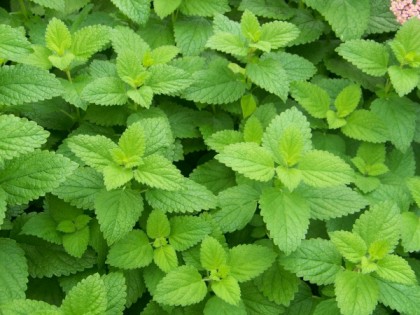|
Gardens Ablaze |
||
|
|
Lemon Balm
|
|
|
Additional Lemon Balm Information
Medicinal Uses Site Map
Home |
Lemon Balm prefers rich, moist soil in either full sun or partial shade, but will still perform in less than perfect conditions. It forms a nice mound of bright green leaves in the spring, and then flowers around mid summer. Flowers are fairly inconspicuous and are white or off-white, with the same taste and properties as the leaves. After flowering, the plant may become kind of raggedy-looking, not adding much in the way of beauty to the garden. At this point, feel free to cut the whole plant way back to maybe 6-8 inches off the ground. It will then rather quickly re-grow into a nice mound of fresh foliage similar to what you had in the spring. Lemon Balm is an excellent first plant for the beginning herb grower, and will forgive lapses in watering and fertilizing. Lemon Balm is hardy to at least zone 5, but will appreciate a nice blanket of mulch in fall in all but the warmest areas. Lemon Balm is native to the Mediterranean region, but is grown widely in herb gardens across America. Lemon Balm is perfectly safe for ingestion, and is used to enhance tea and other iced drinks, soups, stews, salads, sauces, and vegetables. It has a light, lemony scent with maybe a hint of mint. Add fresh Lemon Balm leaves to green salads, fruit salads, chicken salads, poultry stuffing, and fish marinades. The leaves also make a tasty addition to asparagus, broccoli, corn, beans, olives, and shellfish. Lemon Balm can be used fresh, dried, or ground. Harvest before it flowers for optimum taste. Dry it quickly because it loses much of its taste in long drying processes. Be sure when you harvest that it is on a dry, non-humid day for optimal drying conditions. Use both dried leaves and stems for Teas.
Custom Search
|
|
|
Gardens Ablaze |
||
 Lemon
Balm is a
Lemon
Balm is a